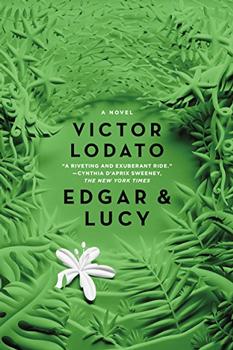Book Club Discussion Questions
In a book club? Subscribe to our Book Club Newsletter and get our best book club books of 2025!
For supplemental discussion material see our Beyond the Book article, Betelgeuse and our BookBrowse Review of Edgar and Lucy.
Please be aware that this discussion guide will contain spoilers!
- The author considers this book "a love story." Would you agree? If so, what are the various love stories represented? How would you define each of them? As triumphs or tragedies?
- Look at the epigraphs throughout the book. Read them again and discuss how they relate to that particular part of the novel?
- Think about Edgar's relationships with the two women in his life. Does his extremely close bond to his grandmother Florence seem healthy, or problematic? As for Lucy: What do you think of her as a mother? Is she doing the best she can? Do you feel differently about her by the end of the book?
- Think about the element of grief in this book. How does it affect the characters' lives? How does it affect their decisions — and, ultimately, their fates?
- Consider Edgar's relationship with Conrad. What did you think, at first? Did your feelings change by the end of the book?
- (SPOILER ALERT ) Does Edgar run away from home, or is he kidnapped?
- The author has referred to this book as "a New Jersey gothic." Would you agree? If so, discuss the gothic elements in the novel. For instance: Do the characters have a complicated relationship to the past? Is there a sense of the past as a malignant influence? Do you think the dilapidated Fini house at 21 Cressida Drive or the cabin in the Pine Barrens could serve as updated version of the haunted or ruined castle of gothic literature?
- Think about Lucy and Frank's romance. Why do you think they were so drawn to each other? What is your opinion of Frank? What is his illness, exactly?
- (SPOILER ALERT) What do you think of Edgar's decision to return to the Pine Barrens? Why does he do it? How is he different when he's finally reunited with his family?
- How do you think the moments of comedy add to the storytelling?
- (SPOILER ALERT) Discuss the reunion between Edgar and Lucy at the end of the novel. Why do they not go to each other immediately at the police station? What do they communicate to each other without words?
- Consider Edgar's personality: his shyness; his odd habits, such as hiding in tight spaces; his propensity for magical thinking. Do you think the doctor who suggests he might be "borderline autistic" is correct — or do you think something else is going on?
- Discuss Edgar's albinism. How does it affect his character? And what do you think is going on when his skin changes color after the fire — and then becomes white again at the end of the story?
- Why do you think Conrad risks the closed world he's built with Edgar to take him out to the café for pie?
- How much sympathy (or lack thereof) do you have for Conrad?
- Who really rescues Edgar from the fire — Conrad or Florence? Discuss the spiritual aspects of the book, including the idea of afterlife and/or limbo. Is the medium, Maria di Mariangela, fake or real? What about Florence's ghost?
- Why do you think the narration changes from third to first person toward the end? Who is really telling this story?
- Think of all the secondary characters, such as Henry and Netty Schlip, Honey Fasinga, Thomas Pittimore, Jarell Lester, Jimmy Papadakis. What does Edgar's disappearance mean to them ? Does it reflect things from their own lives, their own sadnesses and longings? What is each person really looking for?
- The author was born and raised in New Jersey. What did you think of his portrayal of the state and its inhabitants? Did you know much about the Pine Barrens before reading the book? Did you know the myth of the Jersey Devil?
- Throughout the book, there are numerous descriptions of tunnels and water: Pio in the Lincoln Tunnel, the tunnels and aquifers under the Pine Barrens, Frank's submerged car below Shepherd's junction, even the waters of Consolidated Laundry where Florence worked. What do these waters and tunnels signify?
- Did Edgar have three fathers: Frank, Conrad, and the butcher? Or no father?
- Discuss th e unfinished carving on the tree: Edgar loves ... What is the meaning of this unfinished epitaph?
Unless otherwise stated, this discussion guide is reprinted with the permission of Picador.
Any page references refer to a USA edition of the book, usually the trade paperback version, and may vary in other editions.
